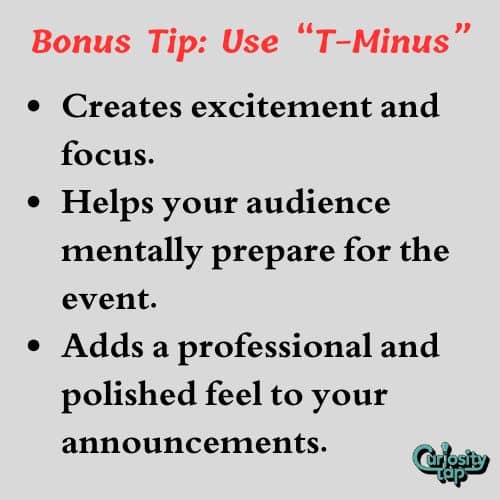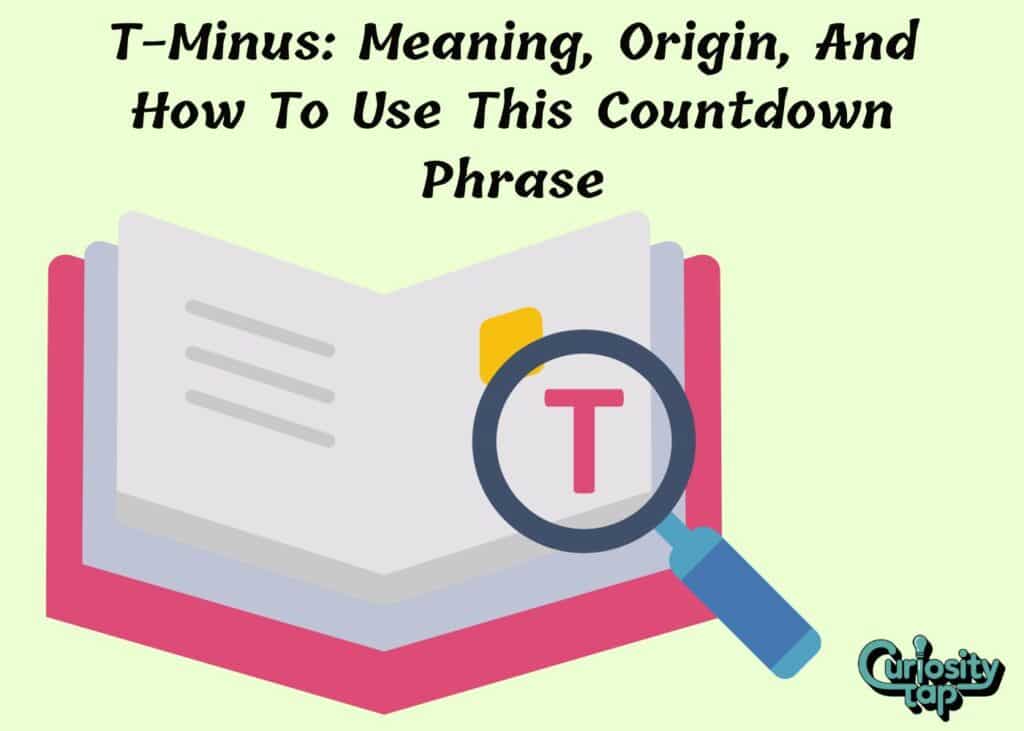Have you ever felt your heart race as you hear the countdown before a rocket launch, or even just before a big event in your life?
That electrifying moment when everything seems to pause, and then boom! something spectacular happens?
The phrase “T-Minus” captures that exact feeling of anticipation and precision.
But what does it really mean?
Where did it come from?
And how can you use it beyond rocket launches?
If you’ve ever wondered about this iconic phrase and its wider impact whether in pop culture, social media, or even everyday conversations you’re in the right place.
Let’s dive deep into the fascinating story of “T-Minus”, its meaning, origin, and how you can sprinkle it into your language for added drama and clarity.
What Does “T-Minus” Actually Mean? Breaking Down the Countdown Phrase
At its core, “T-Minus” is a countdown expression used to mark the time remaining until a scheduled event, typically a launch or start of something significant. The “T” stands for “Time”, and “Minus” indicates the countdown moving backward to zero.
In simple terms:
- T-Minus 10 minutes means there are 10 minutes left before the event starts.
- When the countdown reaches T-0, that’s the moment the event begins often a rocket launching or a mission commencing.
This phrase emphasizes precision and time coordination, essential for activities where timing is critical.
The Origins of “T-Minus”: From Space Missions to Everyday Speec
You might be surprised to learn that “T-Minus” originated in the mid-20th century during the rise of space exploration.
NASA and other aerospace agencies needed an exact, reliable way to communicate how much time remained before a rocket launch.
- Before a space launch, engineers and mission control teams use T-Minus to coordinate activities leading to liftoff.
- For example, T-Minus 5 seconds means exactly five seconds before the rocket ignites.
The phrase quickly became a staple of rocket launches, but its influence didn’t stop there.
As space missions captured the world’s imagination, “T-Minus” entered popular culture and everyday language as a metaphor for countdowns and impending moments.
How to Use “T-Minus” in Real Life: Examples That Go Beyond Rockets
You don’t need to be launching a rocket to use “T-Minus”. This phrase is perfect for any situation where counting down to an important moment adds excitement or clarity.
Here are some practical examples with random names to show how “T-Minus” can fit into daily life:
- T-Minus 1 hour until Emma’s wedding ceremony.
- T-Minus 30 minutes to the start of Operation Dawn, the big office presentation led by Jake.
- T-Minus 10 minutes until the family vacation bus leaves.
- T-Minus 15 seconds before the final buzzer in the basketball game everyone’s on edge!
Using “T-Minus” can add a sense of urgency and drama, making your communication more vivid and engaging.
Why “T-Minus” Works So Well: The Psychology Behind the Phrase
People naturally respond to countdowns because they build anticipation and focus attention. The ticking clock metaphor is deeply embedded in how we experience time-sensitive moments.
- Suspense and drama increase as time runs out.
- Precision timing helps coordinate actions, ensuring everything happens smoothly.
- The phrase encourages a shared experience, whether watching a launch or waiting for a big announcement.
For example, a social media campaign might use “T-Minus 3 days” to build excitement for a product launch, motivating followers to stay engaged.
“T-Minus” vs. Other Countdown Expressions: When to Use What?
Though “T-Minus” is iconic, there are many ways to express countdowns.
Here’s a quick table to compare “T-Minus” with other popular countdown phrases:
| Phrase | Use Case | Tone/Effect |
|---|---|---|
| T-Minus [time] | Technical, precise countdowns | Formal, dramatic, anticipatory |
| Countdown to [event] | General countdowns | Neutral, informative |
| The clock is ticking | Urgency-focused | Casual, motivating |
| Final countdown | Dramatic, often musical/entertainment | Exciting, suspenseful |
| Time’s almost up | Warning, nearing deadline | Urgent, cautionary |
Knowing the right phrase to use depends on your context and the emotion you want to evoke.
“T-Minus” in Modern Culture: From Movies to Social Media Trends
Thanks to its space heritage, “T-Minus” pops up frequently in:
- Movies and TV shows, especially sci-fi and action genres.
- Video games, often during mission countdowns.
- Music lyrics and album titles emphasizing final moments.
- Social media, where influencers and brands use it to hype upcoming events.
For example, a popular YouTuber might say, “T-Minus 3 days until the big reveal!” to create buzz and encourage viewers to stay tuned.
Practical Tips: How to Use “T-Minus” Effectively and What to Avoid
What to Do:
- Use “T-Minus” when you want to highlight time remaining before a key event.
- Pair it with specific time frames for clarity (e.g., T-Minus 20 minutes).
- Use it in formal and informal settings, adapting tone accordingly.
- Add drama or urgency to announcements or reminders.
What to Avoid:
- Don’t use “T-Minus” vaguely without a clear countdown it loses impact.
- Avoid it in casual chats where a simple “X minutes left” works better.
- Don’t overuse it; its power lies in making moments feel special.

Bonus Tip: Use “T-Minus” to Build Anticipation in Your Projects and Events
Want to make your next event, deadline, or launch unforgettable? Try a T-Minus countdown in your communications.
Whether it’s an email campaign, a team meeting, or a social media post, counting down with T-Minus:
- Creates excitement and focus.
- Helps your audience mentally prepare for the event.
- Adds a professional and polished feel to your announcements.
For instance, if you’re launching a new product, start at T-Minus 7 days with daily updates leading to T-0. This creates momentum and keeps everyone engaged.
Frequently Asked Questions
What is the T-Minus meaning in everyday language?
T-Minus means the time left before a planned event, used to mark a precise countdown. It’s popular beyond space launches and helps build anticipation.
Where did the phrase T-Minus come from originally?
The phrase originated with NASA and space missions in the 20th century as a precise way to count down to rocket launches and coordinate timing.
Can I use T-Minus in casual conversations?
Yes! While it started technical, T-Minus is now common in casual speech to add urgency or drama to any countdown, like before a party or deadline.
What are some good alternatives to saying T-Minus?
Alternatives include “final countdown,” “the clock is ticking,” or “time’s almost up,” each suited to different tones and contexts.
Final Thought’s
So the next time you’re gearing up for something big be it a product launch, vacation, or even just the weekend drop a “T-Minus” into your countdown and watch the energy shift.
It’s more than a phrase; it’s a spark of anticipation, a signal that something exciting is just around the corner. From space launches to social media posts, T-Minus brings the drama, the urgency, and the thrill of what’s next.
Read more knowledgeable blogs on Curiosity Tap
Is this article helpful?

Jackson Pearson is a passionate educator and language enthusiast behind the blog Jackson Pearson. With years of experience in teaching and writing, he specializes in simplifying complex grammar rules, breaking down tricky vocabulary, and crafting learning guides that are both engaging and practical. His mission is to help readers boost their English skills whether they’re beginners or brushing up for fluency. Through every article, Jackson brings clarity, structure, and a spark of curiosity to the world of English learning.



